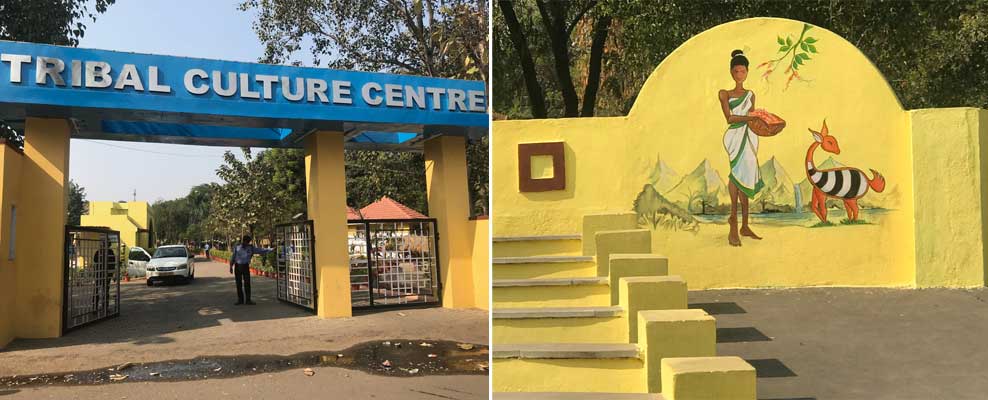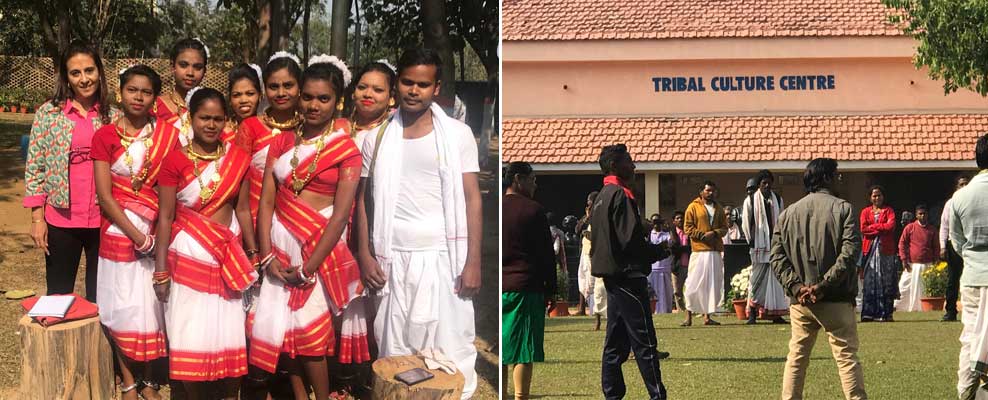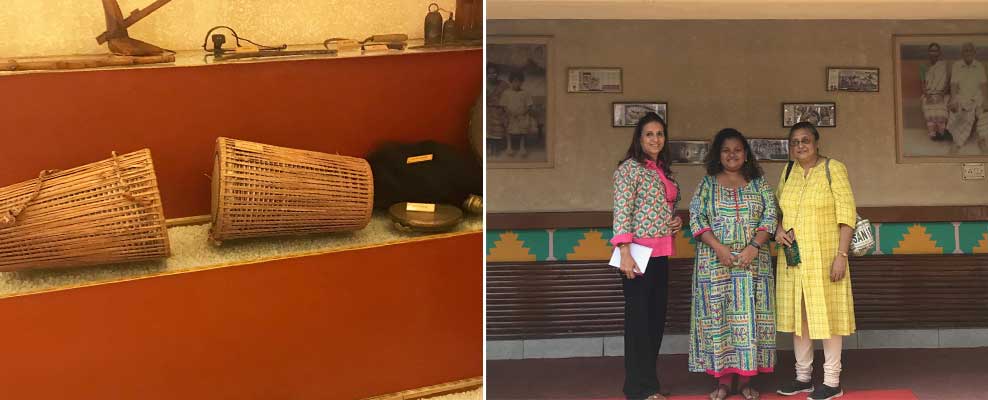A visit to Jamshedpur would not be complete without a visit to the Tribal Culture Center (Center). This was my third visit to this interesting museum of sorts and each visit here has revealed new and interesting facets about some of tribes residing in Jharkhand.

Once you arrive at the Center, there is a bit of a walk between the gates and the main building itself with parking on the left and beautifully manicured lawns to the front and the side. A well-stocked kitchen and training rooms as well as a large amphitheater, used for celebratory performances with delicate tribal figures painted on its walls adorns the complex.

During my recent visit, as I entered the gates I found a number of tribal girls practicing their dance steps in preparation for the afternoon’s Tata Steel Winterfest Carnival; and they shyly agreed to be included in a photograph with me. In front of us, a group of tribal elders were in deep animated discussion and occasionally would clap when one of them engaged the audience with his meritorious speech.
When we entered the Center we were greeted by Ankita Toppo, a lovely and proud girl of the Oraon tribe who agreed to show us around at a moment’s notice.

The first thing which you notice is the door to the Centre which is beautifully carved, although over polished and shiny and the 2 room center is full of interesting artifacts, musical instruments, dance masks, measuring bowls and even a leaved hut made by a prospective groom. This is all to showcase to the world a little bit of tribal history and culture and to remind the tribals of their own antecedents, serving as a calling card for those who have forgotten their cultural roots.
The leaved hut caught my attention and when asked about its significance we were told that this was what had to be prepared by a prospective groom for his soon-to-be-bride. However, once completed, if when water was poured onto the leaves and it seeped inside the hut, then the groom was automatically rejected by the bride’s family, thereby ensuring that in the future, she had a safe and worthy home to reside in.

Looking around the first room we found a number of posters on the wall mainly concentrating on 4 of the larger tribes in the area – the Ho, Santhal, Oraon and Munda tribes.
My immediate question to Ankita was “why is it necessary to have a Tribal Culture Center in the tribal heartland of India?” To which she then explained to me that through the years, due to industrialization, there has been a great deal of displacement of people in the state, and among them the tribals too had migrated to different areas. During this exodus they had left behind their past which included some of their cultural heritage, customs and rites. Therefore this Center was extremely important to them to serve as a reminder of not only where they came from and their heritage, language, customs and traditions but also was a meeting place to discuss and relive their past and to ensure that their culture and traditions was passed onto the next generation.

As we walked through the rooms we discovered that distinctive tribal identities were linked strongly to their unique clothing and scripts. The importance of the Center is to help revive and restore some of the tribal scripts which are on the brink of extinction. The Center also serves to protect some particularly vulnerable tribes which have little or no education, medical facilities and modern amenities. Tata Steel has taken up “the responsibility to save and protect the primitive tribes of Jharkhand and bring them at par with mainstream civilization…. (the company’s) social outreach programs for the upliftment of the(se) weaker sections…. includes income generation, health and hygiene, education and adult literacy, agriculture and wasteland management.” It currently covers over 800 villages in the states of Jharkhand, Orissa and Chhattisgarh.
Another problem brought to our attention was that in modern India, due to rising poverty levels among certain sub-sections of society – tribal children are often trafficked to the larger cities. Boys are used as for bonded labor, and girls as sex slaves and indentured servants.
Thus the Center also serves as a place for knowledge, information and vocational training skills for future employment. It is a very vital part of Jamshedpur society and its status was made clear when I asked Ankita what she was most proud of – and her immediate response, looking around was “my rich cultural heritage.”
Photo credit: Tehnaz Dastoor
